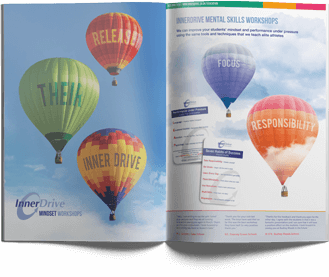Problem-solving isn’t easy, especially when it takes longer than you would have hoped to figure something out. But when the answer suddenly clicks, it’s one of the most satisfying feelings. It’s this “Aha!” moment that psychologists refer to as insight – when a student suddenly understands a concept or idea that was previously unclear to them.
But how does insight work? And how helpful is it? First, let’s take a detailed look at the psychology behind it…
The background of insight
Surprisingly, the idea of insight as a learning tool came from an experiment with a chimpanzee and bananas by psychologist, Wolfgang Köhler.
He placed some bananas outside the chimpanzee’s cage, a short stick inside the cage and a long stick outside, beyond reach. At first, the chimpanzee poked at the bananas with the short stick and then gave up and went away to play. Then, it suddenly returned. Instead of repeating what he did before, the chimp pulled in the long stick with the shorter one and joined them together to finally reach the bananas.
Here, we can see that it wasn’t trial and error that helped the chimpanzee, but an internal change in its cognition when it went and took a break. Subsequent research with humans has advanced from this initial finding to support this sense of insightful learning. For example, studies have shown that taking a break between bouts of problem-solving increases the probability participants find the solution, especially when investing a lot of time to engage with the task.
The four stages of insight
From this research, scientists have split insightful learning into four stages. Understanding these steps can give you guidance on how to facilitate the process of insightful learning for your students:
- Preparation – Gathering information about the problem by actively engaging with it and using analytic thinking.
- Incubation – Temporarily taking a break from the problem in which the mind subconsciously makes new links between information.
- Insight – The “Aha!” moment when everything suddenly clicks.
- Verification – Testing the solution gathered during insight to see if it is the right one.
Familiarising students with these four stages can help them organise their thinking and approach complex problems in a step-by-step way. However, the order of these steps isn’t set in stone; some students may spend more time in each stage and revisit some previous stages, while other students may gain insight much faster. So, it’s worth noting that these steps are a guide for encouraging problem-solving rather than a set of rules.
6 strategies for promoting insight in your students
There are many other ways for you to help your students unlock insightful thinking, both inside and outside of the classroom. These include…
- Encouraging healthy sleep habits
Most students aren’t getting enough sleep and may be missing out on learning as a result. One of the reasons is that sleep inspires insight and is credited for supporting some important scientific breakthroughs.
For students, research suggests that sleeping between a task can give students a greater awareness of underlying rules in complex concepts that aren’t obvious at first. You can find more about the link between sleep and learning (and how to improve it) on our guide page.
- Using open-ended questions
Posing thought-provoking, open-ended questions requires students to think critically and explore different perspectives. This encourages them to have deeper reflections about a topic which increases the likelihood that your students will gain insight.
- Incorporating collaboration
Another way your students can broaden their perspectives is by collaborating with their peers to complete tasks and solve problems. By sharing ideas, students can redirect their thoughts to consider perspectives that they didn’t think of before to gain new insights.
One way to support effective group work is by cultivating a psychologically safe environment so your students feel comfortable with sharing their ideas, even if they are outside the box.
- Setting clear goals
When your students have a sense of purpose for their learning, they will be more willing to put effort into solving any problems that come along the way. You can support your students with these by prefacing potential obstacles that they may face. As a result, they avoid common thinking mistakes and become one step closer to acquiring insight.
- Giving students downtime
As we saw from the research, students benefit from a break as this is when the mind restructures the information that they gather from a problem.
Downtime also helps students develop into independent learners because their minds have time to come to a solution. And if your students are clearly getting stuck, you can always offer clues and hints to draw your students closer to their “Aha!” moment.
Final thoughts
Insight is a powerful learning tool that students benefit from when put in the time and effort. The process of reaching an “Aha!” moment is personal for each student, so the answers may not click for everyone at the same time.
However, putting in place the strategies in this blog can help students balance persistence with downtime to gain new insights and accelerate their overall learning.







